Honor Award
Building Resilience: The Re-Charging of Tobago’s Buccoo Reef Through Electro-Accumulation and Sustainable Infrastructure
Zahra Awang, Student ASLA, University of Toronto
Faculty Advisor: Robert Wright
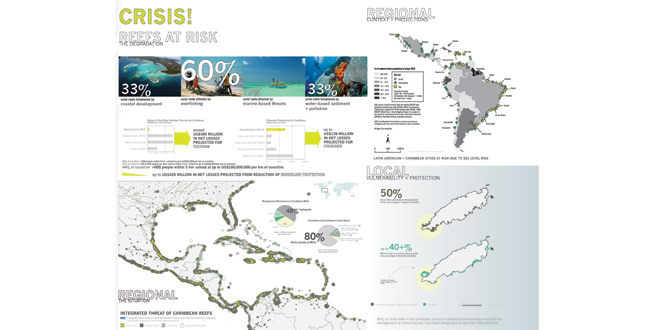 Close Me!
Close Me!Crisis!
Download Hi-Res ImagePhoto: Buccoo Reef Trust, Global Coral Reef Alliance, Google Earth, Zahra Awang,
CG Textures, Getty ImagesPhoto 1 of 14
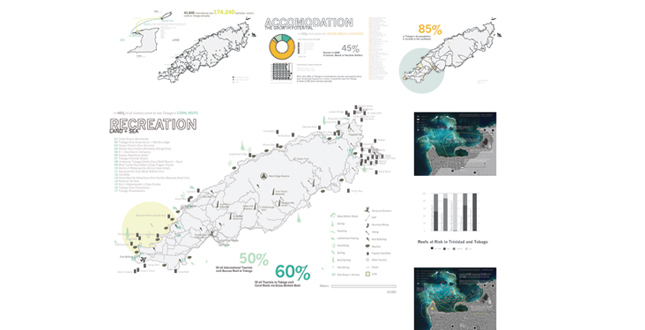 Close Me!
Close Me!The majority of Tobago’s annual visitors are domestic and in recent years, the island has been experiencing a decline in visitation. So, there is room for tourism growth here and specifically, the growth of a more sustainable kind of ecotourism.
Download Hi-Res ImagePhoto: Buccoo Reef Trust, Global Coral Reef Alliance, Google Earth, Zahra Awang,
CG Textures, Getty ImagesPhoto 2 of 14
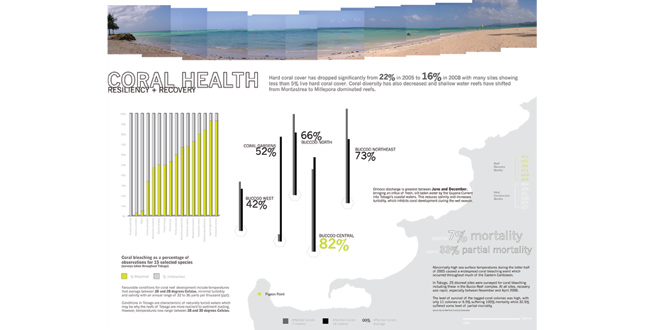 Close Me!
Close Me!Coral Health Resiliency + Recovery. Top: Hard coral cover has dropped significantly from 25% in 2005 to 16% in 2008 with many sites showing less than 5% live hard coral cover. Coral diversity has also decreased and shallow water reefs have shifted from Montastrea to Millepora dominated reefs. Bottom: In 2005, a widespread coral bleaching event resulted in extensive bleaching of Buccoo’s inner reef, likely due to its proximity to the coast and added pressures of pollution and sedimentation in coastal water.
Download Hi-Res ImagePhoto: Buccoo Reef Trust, Global Coral Reef Alliance, Google Earth, Zahra Awang,
CG Textures, Getty ImagesPhoto 3 of 14
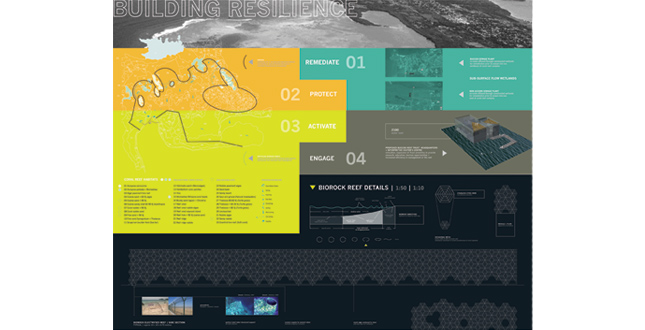 Close Me!
Close Me!Building Resilience. From the analysis conducted, which examined area recreation, marine-based threats and coral species distribution, a four-fold integrated approach for securing the future of this vital natural resource was devised.
Download Hi-Res ImagePhoto: Buccoo Reef Trust, Global Coral Reef Alliance, Google Earth, Zahra Awang,
CG Textures, Getty ImagesPhoto 4 of 14
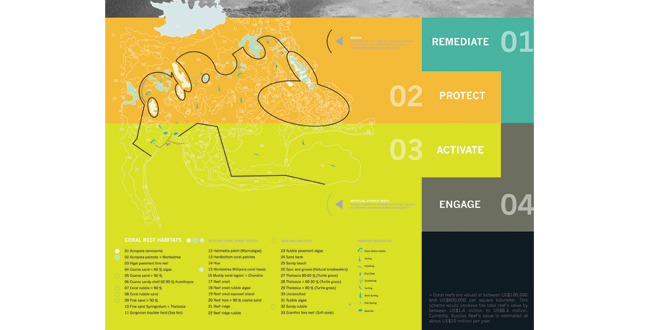 Close Me!
Close Me!Building Resilience. From the analysis conducted, which examined area recreation, marine-based threats and coral species distribution, a four-fold integrated approach for securing the future of this vital natural resource was devised.
Download Hi-Res ImagePhoto: Buccoo Reef Trust, Global Coral Reef Alliance, Google Earth, Zahra Awang,
CG Textures, Getty ImagesPhoto 5 of 14
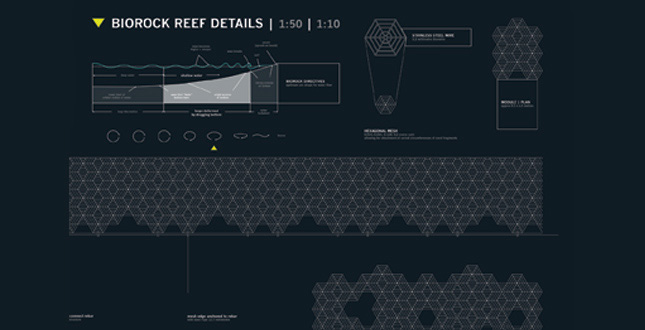 Close Me!
Close Me!Biorock Reef Details
Download Hi-Res ImagePhoto: Buccoo Reef Trust, Global Coral Reef Alliance, Google Earth, Zahra Awang,
CG Textures, Getty ImagesPhoto 6 of 14
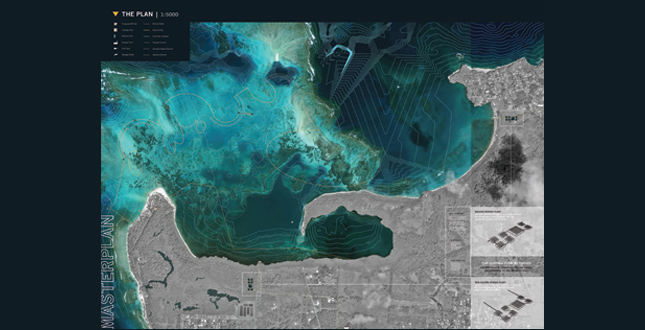 Close Me!
Close Me!The Plan
Download Hi-Res ImagePhoto: Buccoo Reef Trust, Global Coral Reef Alliance, Google Earth, Zahra Awang,
CG Textures, Getty ImagesPhoto 7 of 14
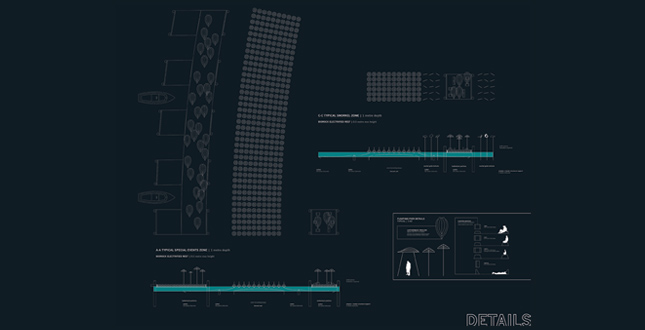 Close Me!
Close Me!Details
Download Hi-Res ImagePhoto: Buccoo Reef Trust, Global Coral Reef Alliance, Google Earth, Zahra Awang,
CG Textures, Getty ImagesPhoto 8 of 14
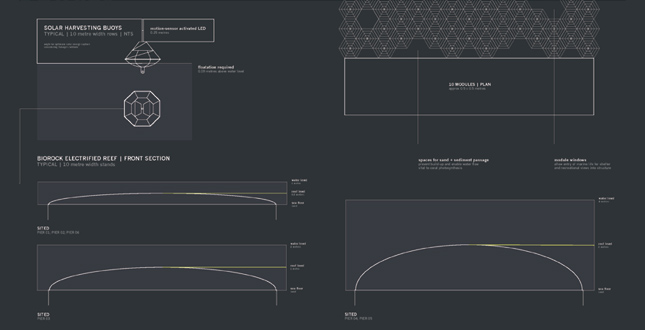 Close Me!
Close Me!Details. The GCRA, responsible for the research and development of Biorock reefs, have presented the technology at MIT and successfully implemented it in over 15 countries. Here, it is adapted to custom-designed wire fencing structures and renewable solar buoy-sourced power.
Download Hi-Res ImagePhoto: Buccoo Reef Trust, Global Coral Reef Alliance, Google Earth, Zahra Awang,
CG Textures, Getty ImagesPhoto 9 of 14
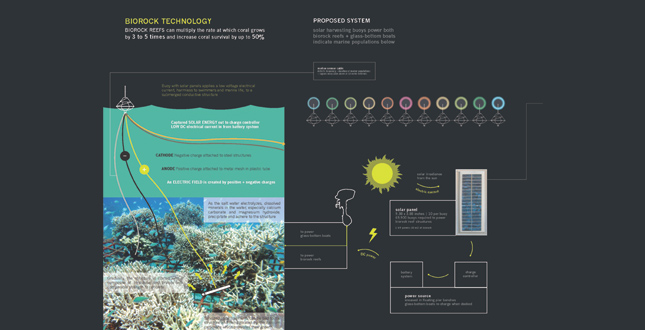 Close Me!
Close Me!Biorock Technology. Biorock Reefs can multiple the rate at which coral grows by 3 to 5 times and increase coral survival by up to 50%.
Download Hi-Res ImagePhoto: Buccoo Reef Trust, Global Coral Reef Alliance, Google Earth, Zahra Awang,
CG Textures, Getty ImagesPhoto 10 of 14
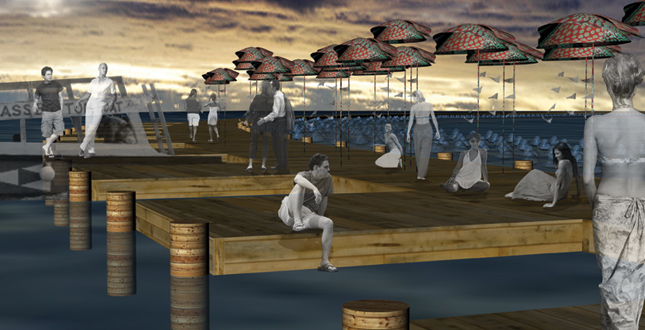 Close Me!
Close Me!Typical Special Events Zone—1 metre depth. Biorock Electrified Reef—0.5 metre max height
Download Hi-Res ImagePhoto: Buccoo Reef Trust, Global Coral Reef Alliance, Google Earth, Zahra Awang,
CG Textures, Getty ImagesPhoto 11 of 14
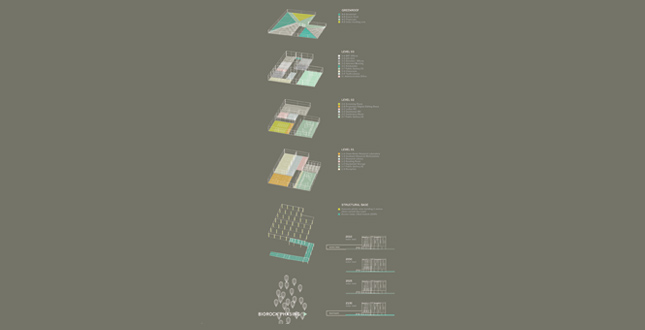 Close Me!
Close Me!BRT HQ. The proposed Buccoo Reef Trust headquarters and Visitor’s Centre would serve as a hub for recreation and a further resource facility for reef education, research and tourism. Considering projected sea level rise, the project anticipates and addresses the coast’s eventual inundation with water adaptive architecture.
Download Hi-Res ImagePhoto: Buccoo Reef Trust, Global Coral Reef Alliance, Google Earth, Zahra Awang,
CG Textures, Getty ImagesPhoto 12 of 14
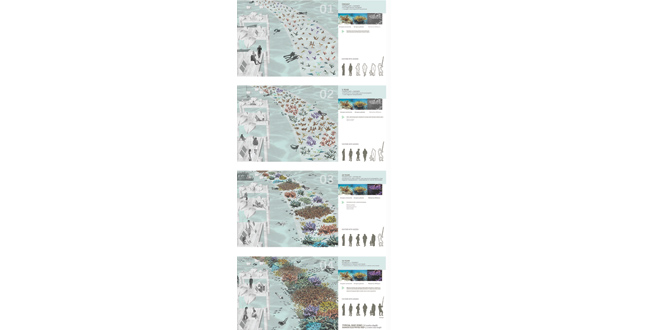 Close Me!
Close Me!Phasing. Artificial Biorock reefs, once implemented, will connect and strengthen existing habitats of resilient coral target species, accelerate and enhance their propogation and act as an alternative destination for tourists, taking pressure off the natural coral reef stands.
Download Hi-Res ImagePhoto: Buccoo Reef Trust, Global Coral Reef Alliance, Google Earth, Zahra Awang,
CG Textures, Getty ImagesPhoto 13 of 14
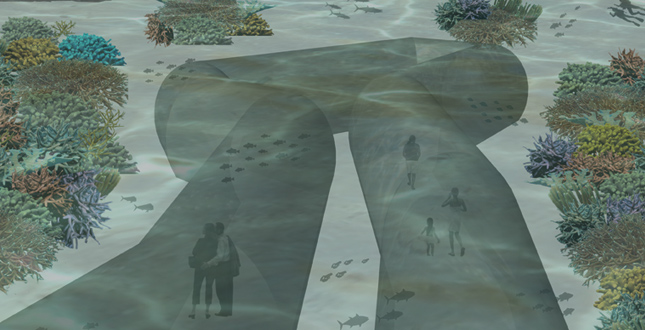 Close Me!
Close Me!Waterscapes are the New Landscapes. Typical Glass-bottom boat + underwater walk zone.
Download Hi-Res ImagePhoto: Buccoo Reef Trust, Global Coral Reef Alliance, Google Earth, Zahra Awang,
CG Textures, Getty ImagesPhoto 14 of 14
Project Statement
This thesis attempts to ameliorate vital tourism development in Tobago with the sensitive coral reef ecology at its centre. Buccoo Reef, the region’s only marine protected area and largest fringing coral reef, is the site of focus. The project aims to evolve area reef recreation while supporting reef ecology via a combination of zoning and sustainable infrastructure. A key component is an artificial reef technology that improves the ability of coral to resist environmental stress.
Project Narrative
Context
In her book, Sea Sick: The Global Ocean in Crisis, the environmental journalist Alanna Mitchell affirms that two phenomena are changing the ocean’s character: carbon dioxide and heat. About one third of the carbon dioxide humans are emitting has entered the ocean while approximately 80% of the additional heat created by climate change has been absorbed by it. Concurrently, the mass removal of marine life by global fisheries has upset the ocean’s own ability to stabilize itself. As ocean acidification increases and Ph levels decrease (the result of CO2 dissolving in water), the cumulative effect is the inhibition of coral reef calcification and formation.
Coral reefs are an extremely valuable natural resource globally for several important services they provide: tourism, fisheries and shoreline protection. On a global scale, if coral reef ecosystems continue to experience degradation at the current rate, by 2015, we will see an annual net loss of US$300 million in tourism, up to US$139 million in fisheries and up to US$420 million from reduction of shoreline protection. The economic benefits of the shoreline protection, fisheries and tourism services of Buccoo Reef alone over a 25-year period are estimated at over $250 million.
Environmental Impact
The coastal areas of southwest Tobago have seen a dramatic loss of vegetation in recent years due to expanding shoreline developments (mostly tourism-related), unsuitable farming practices and the direct output of sewage into coastal waters. The result has been an intense increase in top-soil erosion, marine-based pollution and subsequently, levels of sedimentation and nutrients in inshore reefs. Over-fishing and recreational disturbances have further exacerbated the stress Tobago’s coral reefs are under.
Additionally, in 2005, a widespread coral bleaching event occurred throughout much of the Eastern Caribbean, affecting the site in question. The inner reef experienced the most extensive bleaching, likely because of its proximity to the coast and added pressures of pollution and sedimentation in coastal waters. Following this event, however, it was determined through extensive surveying that several species of coral were particularly resilient to bleaching and able to recover to from the event. These were primarily staghorn, elkhorn and finger coral.
Project + Scope
With over 40,000 visitors per year and a total of 7 square kilometers in size, Buccoo Reef Marine Park figures as a major tourist attraction in Tobago. Pigeon Point, the island’s premier beach and water-sports resort area borders the reef. Tourism generates approximately 55% of the island’s GDP. Fishing is the second largest industry. The reef is a nursery for commercially important stocks of fish and shellfish. A lack of resources, however, have prevented local conservation agencies from enforcing the existing no-fishing legislation and though various marine populations are generally higher in this area, several species have been almost fully exploited, including conch and lobster.
The project approach is four-fold. First, the re-routing of effluent from local sewage plants through sub-surface constructed wetlands for remediation prior to output into coastal waters around the reef. Second, the enforcement of no-fishing legislation within the Park boundaries for the recharging of over-exploited marine populations, the cordoning off of ecologically important habitats and the zoning of area recreation to minimize disturbances to marine populations. Third, the implementation of artificial Biorock reefs to connect habitats of resilient coral target species and to accelerate and enhance their propogation and act as an alternative destination for tourists to take pressure off the natural coral reef stands. Finally, fourth, the re-location and renovation of the headquarters of an important area conservation agency, the Buccoo Reef Trust, which are the primary stewards of the Park.
Additional Project Credits
Buccoo Reef Trust (Consulting Conservation Agency, GIS Data, Maps)
Coral Cay Conservation (Surveys)
World Resources Institute (GIS Data)
The Global Coral Reef Alliance [Architect and Professor Wolf Hilbertz, and Coral Ecologist, Dr. Thomas Goreau] (Artificial Biorock Reef Technology)
MIT (Artificial Biorock Reef Technology + Sustainable Energy Options)
UN Habitat (Map)
World Resources Institute (GIS Data, Maps)
Adaoma Wosu (Graduate Research in association with the Buccoo Reef Trust)
James Foley (Graduate Research in association with the Buccoo Reef Trust)





